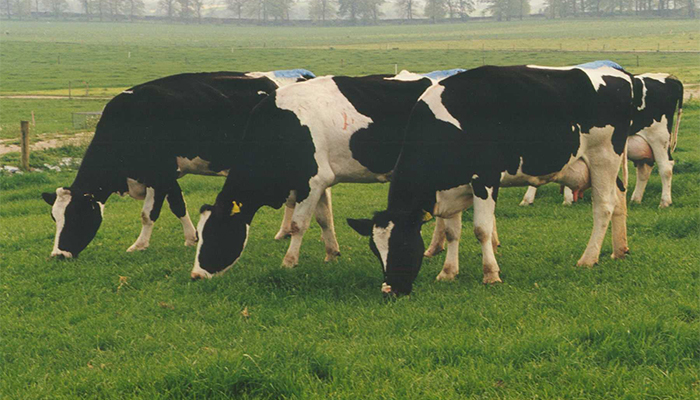Hitting Breeding Targets in the Dairy Herd

We are currently in the middle of the breeding season on most Irish dairy farms. Here Kevin O'Hara, Teagasc Ballinrobe, will look at some of the key targets that dairy farmers need to try and achieve over the coming weeks and look at how these targets will be achieved.
Breeding Management
Most dairy herds in Ireland typically start breeding close to the early days of May so by now most farmers should have completed nearly 3 weeks of Artificial Insemination (AI). The aim is that 90% of all cows to be served would have been inseminated by the end of week 3. This is a key target for farmers to aim for if a compact calving spread is to be achieved next spring. The 6 week calving rate figure is key for all milk producers but especially spring milk herds where cows are typically dried off in November/December.
In order to achieve this, farmers should be using heat detection aids such as tail painting, scratch cards, electronic heat detection collars and or a vasectomised / teaser bull where needed. Time spent physically monitoring cows will be the key element to ensuring the 90% submission rate is achieved. It has been proven that the more time spent monitoring cows the higher the submission rate so this will be the key driving factor for the entire breeding season. Ensuring cows are offered high quality digestible grass at ideal pre-grazing yields throughout the grazing season will help breeding performance.
Non Cyclers
Many farmers complete a pre breeding scan each year in April to check for cows who may have underlying issues which are stopping them from cycling. Issues such as uterine infections, retained cleanings, or even poor body condition scores are the most common. If this scan has not been completed any cows which have not been seen cycling at the end of week 3 should be assessed by either the farmers vet or in some cases the scanning technician. These cows may require some additional aid to get them to start cycling; this can be in the form of wash out or a hormonal treatment such as the use of a CIDR or PRID. These are all typically prescription only so consultation with your vet is essential.
In cases where BCS is below optimum cows should be given additional feed supplement in the parlour or in certain cases put on once a day milking to help build up condition and hopefully allow the cow to cycle naturally. This is extremely beneficial to 1st time calvers as they are under the most pressure in the herd.
Lameness can be a major factor in cow fertility and is a major issue where cows are walking long distances to and from the milking parlour. Cows which become lame in the breeding season should be assessed immediately as they will lose condition rapidly and may become non estrus (not cycling) shortly afterwards. Often farm roadways in poor condition can be the cause so address this problem if this is causing lameness in cows.
Finally where farmers are using stock bulls to clean up after AI, time should be spent ensuring the bull is fit for purpose, i.e. in good BCS, has no signs of lameness with good mobility and most importantly is fertile. Research suggests that up to 5% of bulls are completely infertile and a further 15-20% will be partially or become periodically infertile. To address this bulls should be fertility tested or if this is not an option good data recording should take place with regards to when cows were served and monitored subsequently to see if any repeats are occurring. Bull infertility can be very costly and can further drag out the breeding season and have a negative impact on 2022 calving season. It’s worth remembering to treat bulls carefully and to ensure that all safety precautions are taken when the bull is running with the herd to keep you and your family safe this summer.
If you liked this article you might also like to read Heat Detection by Tail Painting
Read more here on Breeding Management
Teagasc Advisors are regular contributors of articles to Teagasc Daily. You can contact any of our Teagasc offices using this link Teagasc Advisory Regions here
